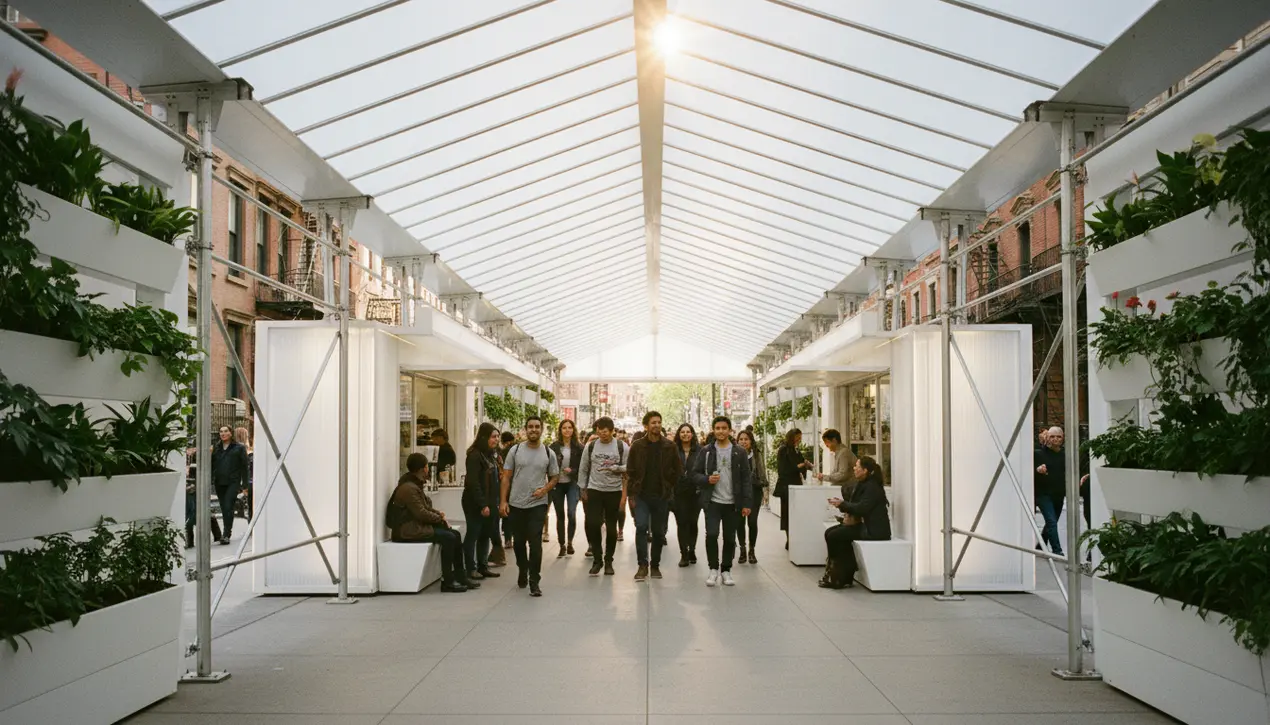
Othertransport & aviationInfrastructure Projects
New York City upgrades scaffolding for clearer sidewalks.
AN
Andrew Blake
2 days ago7 min read
New York City, a metropolis perpetually under construction, has unveiled a radical new vision for its ubiquitous scaffolding, a development that feels less like a municipal upgrade and more like a quiet revolution in how we inhabit urban space. For decades, the city's sidewalks have been dominated by the oppressive, dark-green plywood and steel sheds known officially as sidewalk sheds but colloquially to millions of New Yorkers as simply 'the scaffolding.' These structures, mandated for public safety during building maintenance and construction, have become a notorious feature of the city's streetscape, creating gloomy, cavernous tunnels that obscure storefronts, breed a sense of unease, and collectively shroud over 9 million linear feet of sidewalk at any given time. The new initiative, born from a collaboration between the global engineering firm Arup and the architecture practice Practice for Architecture and Urbanism (PAU), proposes six distinct, lighter, and more transparent systems designed to finally prioritize the pedestrian experience.This isn't just a cosmetic change; it's a fundamental rethinking of a necessary urban evil. The proposed designs range from minimalist metal mesh canopies that allow light to filter through to modular, polycarbonate-paneled structures that feel more like a modern pavilion than a construction barrier.The implications are profound. By increasing visibility, the city aims to enhance public safety beyond just falling debris, discouraging crime and improving the vitality of street-level commerce, which has long suffered under the shadow of these sheds.Historically, the current design standard has been in place since the 1970s, a reaction to a fatal incident that prompted stringent safety laws. While effective at their primary job, they have created a secondary set of urban ailments.The new designs from Arup and PAU attempt to solve for both, integrating lighting, wayfinding, and even potential green infrastructure. This shift mirrors a broader global movement in cities like London and Tokyo, where temporary urban structures are increasingly required to contribute positively to the public realm rather than simply mitigating harm.The rollout will be a massive logistical and financial undertaking, involving city agencies, property owners, and construction firms, and will undoubtedly face hurdles in cost and implementation. Yet, the core idea is powerfully simple: the infrastructure that protects us as we move through the city should not, in the process, degrade the very experience of being in it.For the average New Yorker, this could mean the return of sunlight to a block they haven't seen in years, a clearer view of a beloved brownstone's facade, or simply a less claustrophobic walk to the subway. It’s a testament to the idea that even the most utilitarian elements of our cities deserve thoughtful design, and that improving the daily rhythm of life for eight million people often starts with something as simple as letting a little more light in.
#urban design
#pedestrian safety
#sidewalk sheds
#infrastructure upgrade
#featured
#New York City
#Arup
#PAU
Stay Informed. Act Smarter.
Get weekly highlights, major headlines, and expert insights — then put your knowledge to work in our live prediction markets.
Comments
Loading comments...
© 2025 Outpoll Service LTD. All rights reserved.